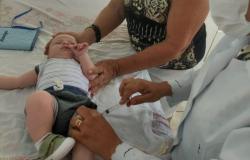Climate change is increasing temperatures and making heat waves more frequent and acute. By adding humidity, extreme phenomena test the limits of the human body. A recent example? On Sunday, in a heat wave that hits Brazil, the city of Rio de Janeiro reached a new thermal sensation record: 62.3ºC.
When exposed to extreme temperatures, the body goes through several physiological adaptations to regulate temperature: the body’s first reaction is sweat. But at very high values and especially when it is also humid, this mechanism can become ineffective. Extreme situations of exposure to intense heat can cause serious health complications, such as dehydration, exhaustion, heatstroke and even death.
Over the past few years, meteorologists have studied “wet bulb temperature”, a measurement that takes into account not only the temperature of the air, but also the amount of moisture it contains. At the upper limit, these temperatures can cause serious health effects if you cannot find a way to cool down quickly.
Initially, wet bulb temperature measurement was done by covering a thermometer with a cloth soaked in water. The process of evaporation of water from the cloth, thus lowering the temperature, reflects the way in which the human body cools with sweat. Currently, it is measured using electronic instruments at meteorological stations. At 100% relative humidity, the wet bulb temperature is the same as the dry air temperature, but with less humidity it is lower.
High wet bulb temperatures are dangerous because humans lose about 80% of their heat through sweating, and when humidity and air temperature are high, it becomes more difficult to lose excess heat. Sweat evaporates very slowly, if at all, in very humid conditions. If the body is unable to cool down, problems begin that can lead to death.
TERCIO TEIXEIRA
Discovering the human limit is an area of ongoing investigation among scientists. A study carried out in 2010 and which serves as a reference – published in the scientific journal of the National Academy of Sciences of the United States – concluded that a wet bulb temperature of 35ºC that persists for six or more hours can induce hyperthermia, cause serious health consequences and lead to death. In 2022, a research published in Journal of Applied Physiology suggested that the limit could be lower – between 30 and 31ºC.
Climate change is expected to affect not only the increase in wet bulb temperatures, but also their persistence. The upper limit of these temperatures is directly related to the rise in the global average temperature. “If we warm the world by about 1°C, then the maximum wet bulb temperature that can be recorded across much of the world increases by about one degree,” explained Matthew Huber, one of the authors of the 2010 study, to Reuters.
A 2020 work published in Journal of Scientific Advances concluded that, rather than lasting just an hour, dangerous wet bulb temperatures could persist for six or more hours by 2060. Tropical regions with high humidity are generally those most at risk of experiencing them. China, India, Bangladesh, Pakistan and the African Sahel region are considered risk zones.
Small areas have previously had wet bulb temperatures considered lethal, but these only lasted an hour or two at a time, avoiding such serious consequences. Jacobabad, Pakistan, has exceeded a wet bulb temperature of 35°C on at least four occasions, according to Reuters. Other cities recorded temperatures above 32ºC, such as La Paz, in Mexico, or Abu Dhabi, in the United Arab Emirates.
In the case of Hong Kong, where at the beginning of March the humidity approached 100% and last year’s summer was the hottest ever, the worst-case scenario indicates that wet bulb temperatures of 35ºC could be common by the end of the century. The study’s least serious prediction released in September last year points out that it will be necessary to wait until 2180 to reach this threshold.
Tags: Temperature humidity extreme combination tests limits human survival
--




